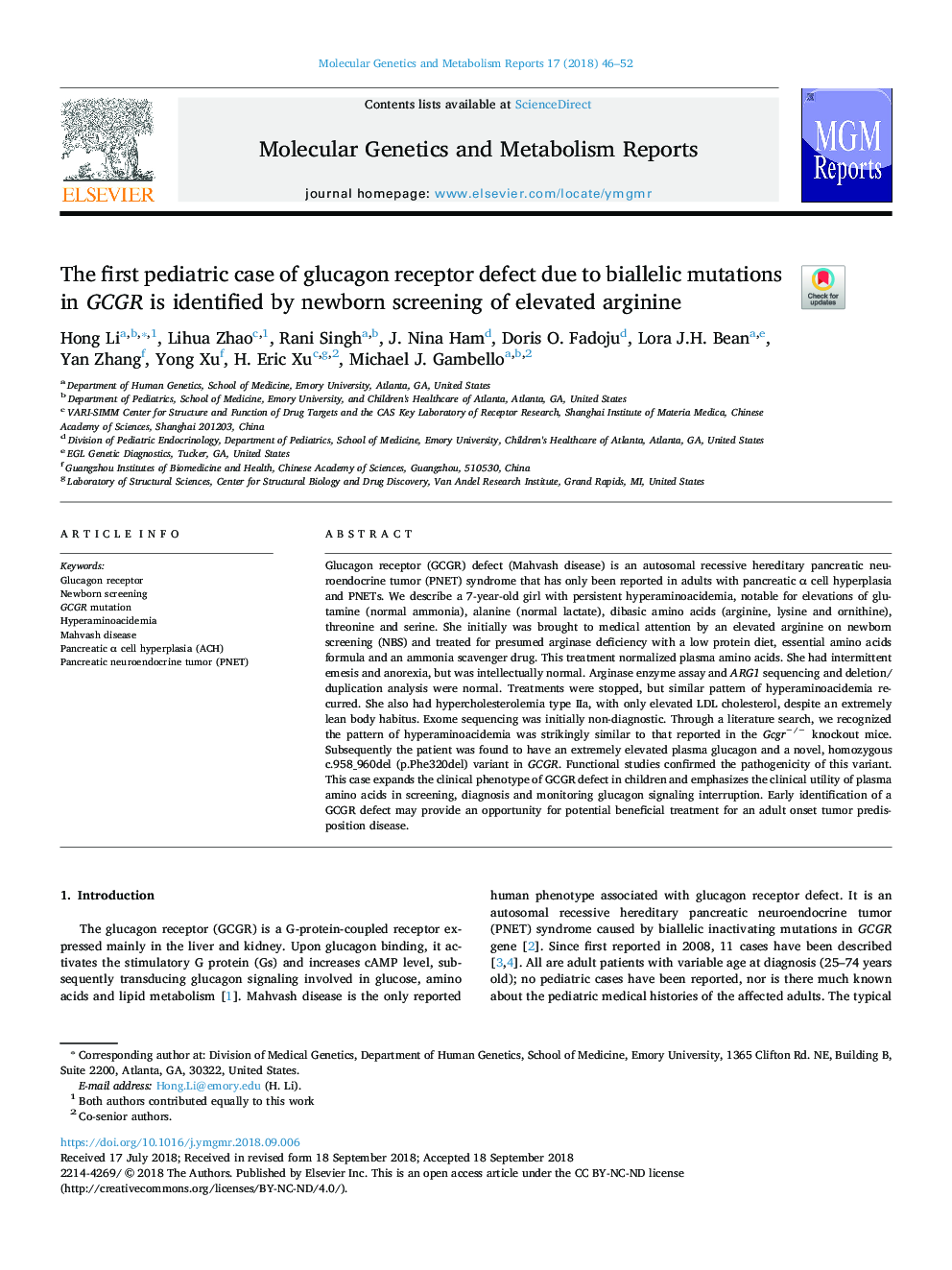| کد مقاله | کد نشریه | سال انتشار | مقاله انگلیسی | نسخه تمام متن |
|---|---|---|---|---|
| 11030852 | 1646133 | 2018 | 7 صفحه PDF | دانلود رایگان |
عنوان انگلیسی مقاله ISI
The first pediatric case of glucagon receptor defect due to biallelic mutations in GCGR is identified by newborn screening of elevated arginine
دانلود مقاله + سفارش ترجمه
دانلود مقاله ISI انگلیسی
رایگان برای ایرانیان
موضوعات مرتبط
علوم زیستی و بیوفناوری
بیوشیمی، ژنتیک و زیست شناسی مولکولی
بیوشیمی، ژنتیک و زیست شناسی مولکولی (عمومی)
پیش نمایش صفحه اول مقاله

چکیده انگلیسی
Glucagon receptor (GCGR) defect (Mahvash disease) is an autosomal recessive hereditary pancreatic neuroendocrine tumor (PNET) syndrome that has only been reported in adults with pancreatic α cell hyperplasia and PNETs. We describe a 7-year-old girl with persistent hyperaminoacidemia, notable for elevations of glutamine (normal ammonia), alanine (normal lactate), dibasic amino acids (arginine, lysine and ornithine), threonine and serine. She initially was brought to medical attention by an elevated arginine on newborn screening (NBS) and treated for presumed arginase deficiency with a low protein diet, essential amino acids formula and an ammonia scavenger drug. This treatment normalized plasma amino acids. She had intermittent emesis and anorexia, but was intellectually normal. Arginase enzyme assay and ARG1 sequencing and deletion/duplication analysis were normal. Treatments were stopped, but similar pattern of hyperaminoacidemia recurred. She also had hypercholesterolemia type IIa, with only elevated LDL cholesterol, despite an extremely lean body habitus. Exome sequencing was initially non-diagnostic. Through a literature search, we recognized the pattern of hyperaminoacidemia was strikingly similar to that reported in the Gcgrâ/â knockout mice. Subsequently the patient was found to have an extremely elevated plasma glucagon and a novel, homozygous c.958_960del (p.Phe320del) variant in GCGR. Functional studies confirmed the pathogenicity of this variant. This case expands the clinical phenotype of GCGR defect in children and emphasizes the clinical utility of plasma amino acids in screening, diagnosis and monitoring glucagon signaling interruption. Early identification of a GCGR defect may provide an opportunity for potential beneficial treatment for an adult onset tumor predisposition disease.
ناشر
Database: Elsevier - ScienceDirect (ساینس دایرکت)
Journal: Molecular Genetics and Metabolism Reports - Volume 17, December 2018, Pages 46-52
Journal: Molecular Genetics and Metabolism Reports - Volume 17, December 2018, Pages 46-52
نویسندگان
Hong Li, Lihua Zhao, Rani Singh, J. Nina Ham, Doris O. Fadoju, Lora J.H. Bean, Yan Zhang, Yong Xu, H. Eric Xu, Michael J. Gambello,